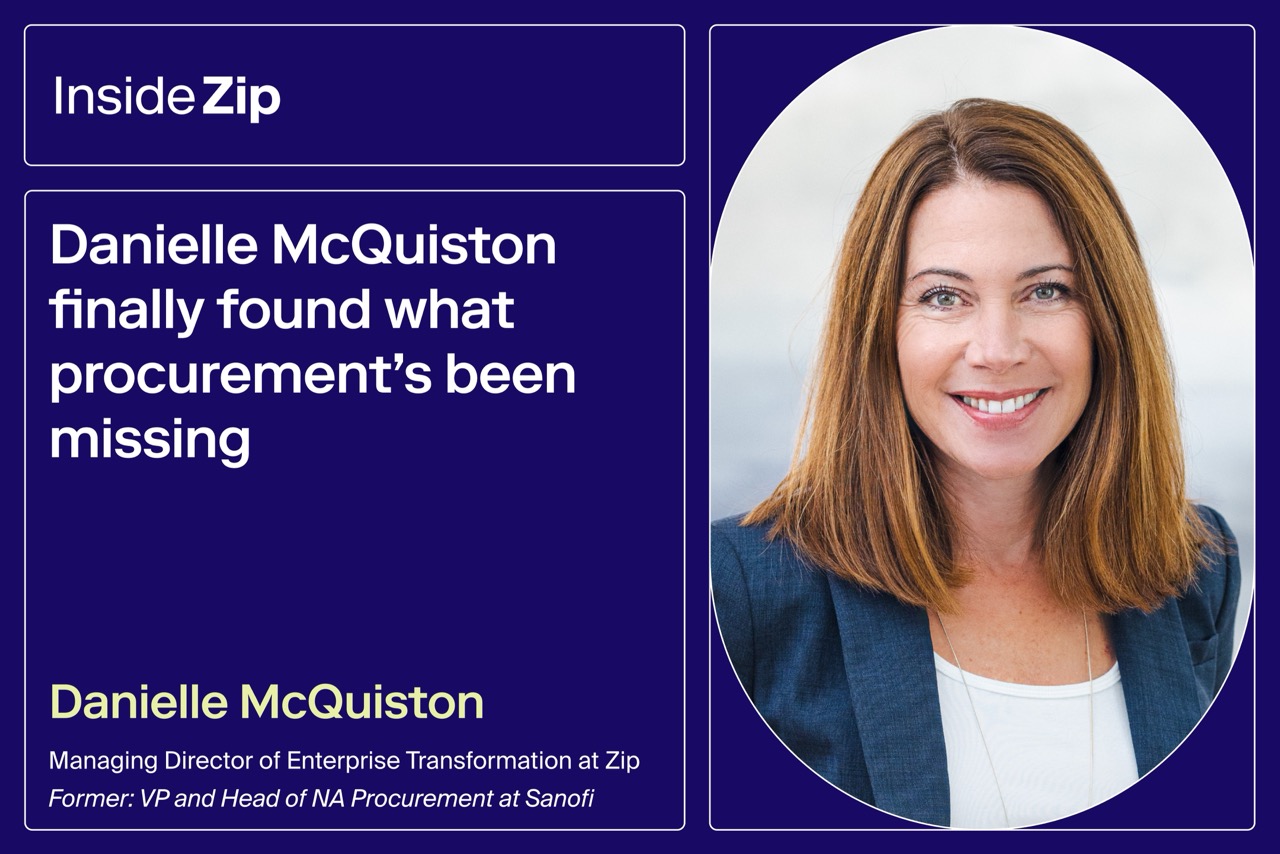
What is cash flow management? + 10 strategies
Businesses use cash flow management to monitor cash inflows and outflows to ensure they can operate and grow effectively. Read on to learn more.

Poor cash flow management is one of the most common reasons new businesses fail. Cash flow challenges can arise from late payments, unforeseen expenses, and poor financial management. More issues come from improper inventory tracking, inefficient budgeting, and inaccurate forecasting. Cash flow management is your company’s lifeblood, which is why you need sound strategies in place.
Below, we go over 10 strategies to help you maintain a positive cash flow and support your business’s success. With these strategies, your business will have more financial stability, flexibility to invest and grow, and far less stress. We’ll also discuss some common cash flow challenges businesses face so you can solve problems proactively.
What is cash flow management?
Cash flow management is the process of controlling and monitoring a business’s financial inflows and outflows. It’s essentially what can make or break your business’s financial success, so the need for optimization and impactful strategy is paramount.
Businesses have a lot of expenses to track, and ideally, you’re bringing in more cash than you’re spending. The management of cash flow requires you to keep tabs on all of your expenses, including:
- Operating expenses (salaries, marketing costs, utilities, etc.)
- Taxes
- Vendor payments
- Repairs and maintenance
- Capital expenditures
Typically, the primary source of cash inflow comes from sales, but you can also increase your cash balance from other sources like interest income, loan repayments, and government grants.
Why cash flow management matters
Knowing how to manage your cash flow and regularly performing a cash flow analysis improves your chances of having a successful, profitable business. Every business hits rough patches, but managing your cash flow properly allows you to weather the storm and, sometimes, even reverse it. To boil it down, cash flow management enables you to:
- Anticipate financial gaps: A financial gap is when your expenses exceed your inflows of cash, which can lead to a shortage of funds. If you forecast these gaps, you may be able to avoid them.
- Minimize financial strain: If you see your business is struggling to meet financial obligations, you can cut back on costs, increase sales, or negotiate with creditors.
- Enhance financial leverage: When you properly manage cash flows, you may end up with a cash surplus, allowing you to use the opportunity to hire more staff, expand the business, and invest in better equipment.
Refine budget precision: As you keep a closer eye on your cash flow, you can refine your budgets by having a more accurate picture of inflows and outflows.

10 strategies for effective cash flow management
To reduce the potential of cash flow problems, you need effective strategies to help you track your inflows and outflows. The following 10 strategies can help you improve the financial health of your company and set you up for long-term success.
1. Create a financial forecast
A well-crafted forecast is a roadmap businesses can use to navigate financial difficulties and take advantage of favorable conditions with confidence.
The ability to project the future of your cash inflows and outflows with a financial forecast is a cornerstone of managing cash flow for any business. It can help you plan ahead for upcoming expenses like new equipment. It’s also useful for cash influxes from customers paying invoices.
Whether you need to adjust spending or seek additional funding, having a financial forecast allows for strategic decision-making. The forecast also helps you capitalize on opportunities to invest and expand. For example, if you foresee an increase in cash flow from your busy season, you can plan to hire additional staff, upgrade equipment, or pay off debts ahead of time.
2. Prioritize inventory management
Proper inventory management is all about ensuring you don’t have too little or too much product. Either of these scenarios can lead to cash flow problems, so prioritizing inventory management should be a top priority. The last thing you want is to sit on a lot of unsold inventory or have a stockout when your product is in high demand.
Managing your inventory properly can help your business find the delicate balance between minimizing excess and having adequate inventory. Historical data is a great place to start with inventory management—the patterns and trends can give you an idea of how much inventory you should stock during different times of the year. This can lead to additional cash for expenses and investments to improve your business’s financial health.
3. Handle invoices promptly
Your business may rely on customers paying their invoices for a steady cash flow, but customers can’t pay if you don’t send invoices promptly. Set guidelines for when to send out invoices and provide your team with tools like automated software to send them on time. This allows your customers to pay their invoices on time, preventing potential delays.
It’s also important to maintain a good relationship with your suppliers by paying your own invoices promptly. Properly managed invoices also reduces late fees, giving you one less financial burden to worry about.
4. Explore additional revenue sources
Your business can mitigate risk by diversifying revenue sources. Additional revenue streams reduce the impact of fluctuations in demand, economic downturns, and supply chain issues. With these additional revenue sources in place, you can still generate income when one area experiences a decline.
A primary example was when the COVID-19 pandemic closed businesses in 2020. While most restaurants experienced difficulties, those that previously set up online delivery services were in a position to continue operating. It’s impossible to predict the future, but having multiple revenue sources gives you options when you need to weather difficult times.
5. Take advantage of early payment discounts from suppliers
Some of your suppliers may offer discounts for early payments. In addition to reducing your overall expenses, this can improve liquidity by accelerating cash flow from saved costs. Plus, it can improve your relationship with your suppliers.
Even if a supplier only offers a 2%-3% discount if invoices are paid within a certain amount of time, those savings can add up to thousands of dollars per year. You can then use the money you saved to pay down other debts or invest in more inventory, leading to increased sales and improved cash flow.
6. Negotiate supplier agreements
Whether you’re renewing a current contract with a supplier or onboarding with a new supplier, always negotiate the terms. Favorable payment terms, like extended payment periods or reduced purchase minimums is a great way to improve cash flow. Proper negotiations can delay outflows, giving businesses more time to generate revenue while also reducing costs.
7. Implement dynamic pricing strategies
Dynamic pricing strategies are all about supply and demand. Adjusting your prices in real time based on market demand allows you to optimize your revenue generation to improve your cash flow. Increase prices during peak demand and offer discounts to entice customers as a way to stimulate sales when times are slow.
The previous strategy of creating a financial forecast gives you a good idea of when you may want to implement dynamic pricing. Your forecast may show that the holiday months at the end of the year are when demand is high, but the following months slow down a bit. This gives you time to plan your dynamic pricing increases and create strategies for promoting discounts afterward.
8. Diversify payment options for customers
To improve the likelihood of customers paying on time, you should offer a variety of payment options. Believe it or not, one study from the University of Nebraska at Omaha found that diverse payment options can influence customer behavior and increase sales, and having more options can expand your customer base. Additional payment options also reduce the need to rely on a single payment processor, minimizing the impact of potential disruptions or fees.
Consider offering these payment options:
- Credit cards
- Debit cards
- Checks
- Mobile payments (PayPal, Cash App, Venmo, etc.)
- ACH transfers
- Financing options
9. Outsource non-core functions to reduce costs
Many businesses reduce costs by outsourcing tasks that aren’t essential to core business operations. This helps reduce overhead expenses and improve profitability. Increasing your staff is expensive, but you can easily outsource to a company that already has the expertise in that area.
This strategy is unique to each business, so it’s important to research and see what you can potentially outsource. For example, you may be able to outsource your customer service to a third-party call center or hire a company that manages human resources.
10. Use cash flow management software solutions
One of the best ways to improve your cash flow system is to invest in cash flow management software. As you can see, there are a lot of strategies to improve your cash flow management, and modern software can do a lot of it for you. It can provide real-time cash flow tracking, forecasting, inventory management, and in-depth reporting.
Cash flow management software can also create cash flow categories, like cash flows from operations (CFO), cash flows from investing (CFI), and cash flows from financing (CFF). The best software utilizes artificial intelligence to reduce errors and help you make better spending and cost-controlling decisions.
AP automation for cash flow management

Accounts payable (AP) plays a crucial role in cash flow management because it tracks how much money your company owes vendors. You need to pay vendors on time to stay in good standing and ensure they provide the products or services you need to properly run your business.
Good cash flow management requires accounts payable to manage the timing of payments so vendors get paid while your business maintains a healthy cash flow. Paying too quickly can disrupt your cash flow, but paying late can harm vendor relationships.
Fortunately, cash flow management software can automate many aspects of the AP process, providing a host of benefits, including:
- Fewer errors in invoice processing: Automation can reduce errors that often result from manually managing invoices, giving you greater visibility into all aspects of the AP process with a centralized platform.
- Quicker invoice approvals and payments: With accounts payable automation, you can rest assured vendors will be paid on time, helping you avoid potential fees and penalties.
- Clearer insights into spending patterns: AP automation software has detailed reporting tools, empowering you to identify savings opportunities, detecti fraud from unusual spending patterns, and create budgets.
- Easier PO adoption and vendor management: This software also streamlines the entire PO process. It simplifies vendor onboarding, enables better communication through an online portal, and cuts down on manual work.
- More precise cash flow forecasts: Improved accuracy from automation gives you the precision you need to better predict cash flow fluctuations so you can plan ahead.
Cash flow management example
We’ve covered cash flow management strategies and how automation can improve your cash flow management. Now, let’s take a look at what that might look like in practice for a business facing cash flow challenges.
Imagine a small boutique store in a busy city that’s experiencing some unexpected changes. The store is facing cash shortages due to changing trends and high competition.
The first cash flow management strategy is renegotiating payment terms with suppliers. The business turns to suppliers they have a long history with to extend payment terms, allowing the owner more time to generate revenue. The owner also decides to begin diversifying revenue sources by opening an online store to widen their customer base.
Thanks to cash flow management software, they review their reports and realize they need to implement a rigorous inventory management system. The software shows them where they can minimize excess stock and avoid unnecessary costs while also automating their AP workflow to handle their renegotiated terms with suppliers.
After a few months, there’s a noticeable improvement in the store’s cash flow. The owner managed to cut costs and generate more revenue from online sales, giving them the time needed to pay suppliers in full. They also made more money than they expected, allowing them to add to their emergency fund should they run into financial difficulties again.
Common challenges to cash flow management

Fluctuating industry cycles
Unpredictable economic conditions can cause cash flow issues at any time for a variety of businesses. Some examples from recent history are the housing market crash of 2008 and the COVID-19 pandemic. This is why cash flow management is even more important for industries like construction, real estate, and automotive sales.
Inconsistent revenue streams
Some industries have more predictable cash flow fluctuations. Travel and agriculture are prime examples. Properly forecasting project expenses via a spend analysis can help keep a steady stream of cash throughout the year.
Accelerated business growth
Expansion is great for any business, but it needs to be done strategically. Growing your business with your cash outlay too fast can lead to cash flow issues due to more expenses. These issues can arise from investing in more equipment, property, staff, and inventory too quickly.
Weak accounts receivable processes
For your business to maintain a steady inflow of cash, customers need to pay their bills on time. If your accounts receivable system is unorganized, getting paid becomes a challenge. This is a common issue for newer businesses, but cash flow management software can help by automating repetitive tasks like notifications for outstanding invoices.
Extended credit terms
Similar to accounts receivable issues, some businesses become too lenient with extending credit. While it’s important to maintain good relationships with your customers, it’s equally important to ensure you’re paid in a reasonable amount of time. If you’re selling to other businesses, they may delay payments to help with their own cash flows.
Enhance cash flow management with AP automation
If you’re ready to optimize your cash flow management system, Zip has you covered with our procure-to-pay (P2P) software. Our P2P system is equipped with true automation, assisting with data entry, data validation and matching, and approval routing. With detailed reporting, you get the accuracy you need to make strategic decisions with your company’s finances. Our system is intuitive and helps you onboard new vendors and manage POs with ease.
To learn more, request a demo of Zip’s procure-to-pay software today.
FAQ
Below, we answer some common queries and provide additional insights to help you optimize your business’s financial health.
What’s the difference between negative and positive cash flow?
Positive cash flow occurs when a business’s income exceeds its expenses, leading to a surplus of cash. Negative cash flow is the opposite—when a business’s expenses exceed its income, resulting in a cash deficit.
How does debt financing differ from equity financing?
Debt financing is when a business borrows from lenders and pays the loan back with interest. Equity financing involves selling ownership stakes in the company to investors, making them shareholders.
What does it mean to optimize cash flow?
When a business optimizes its cash flow, it brings in a steady and healthy flow of money. Accomplishing this requires balancing inflows and outflows by maximizing revenue-generating opportunities and minimizing unnecessary costs.
How do businesses manage and control cash flow?
Cash flow management strategies aim to increase revenue and reduce expenses by accurately tracking inflows and outflows and forecasting future trends. Cash flow management software can help with these tasks.

Maximize the ROI of your business spend

Enter your business email to keep reading


























.webp)




















.avif)













.avif)










.webp)





.avif)












.avif)
